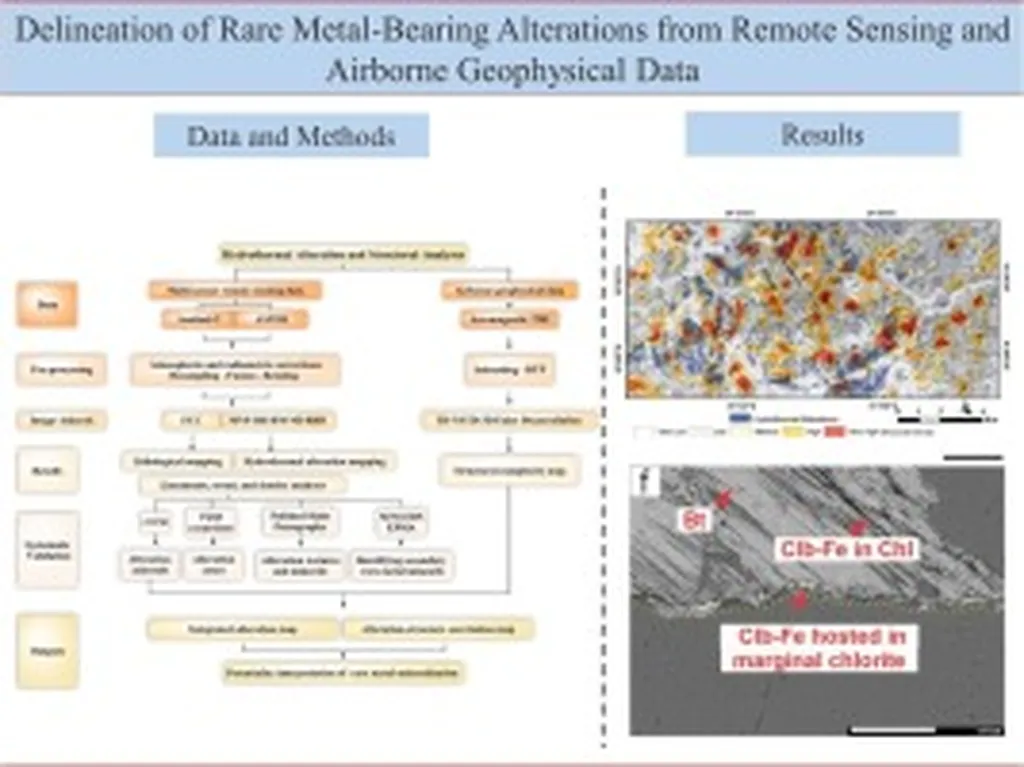In the rugged, mineral-rich landscapes of Eastern Kazakhstan, a groundbreaking study is unlocking new possibilities for the energy sector. Researchers, led by M. Ye. Rakhymberdina from the D. Serikbayev East Kazakhstan Technical University, are harnessing the power of remote sensing technologies to identify rare metal deposits with unprecedented precision. This work, published in ‘The International Archives of the Photogrammetry, Remote Sensing and Spatial Information Sciences’ (translated from Russian as ‘The International Archives of the Photogrammetry, Remote Sensing and Spatial Information Sciences’), is not just academic—it’s a game-changer for the future of energy and mineral exploration.
Rare metals like lithium, cobalt, and rare earth elements are the backbone of modern energy technologies, from electric vehicles to renewable energy systems. However, locating these valuable resources has always been a challenge, often involving costly and time-consuming fieldwork. Rakhymberdina and her team are changing that narrative by leveraging multispectral satellite data to detect patterns of mineralization from afar. “By analyzing the spectral characteristics of rare metal pegmatites and their constituent minerals, we can establish unique signatures that guide us to potential deposits,” Rakhymberdina explains. This approach not only streamlines the exploration process but also significantly reduces the environmental footprint of mining operations.
The study focuses on magmatogenic ore systems, areas where volcanic activity has concentrated valuable minerals. By processing and interpreting multispectral images, the researchers can accurately identify minerals and assess their distribution. “Modern machine learning techniques have revolutionized our ability to analyze data efficiently,” says Rakhymberdina. These techniques automate mineral identification and classification, making the process faster and more reliable than ever before.
The implications for the energy sector are profound. As the world shifts towards cleaner energy solutions, the demand for rare metals is skyrocketing. This research provides a roadmap for discovering these critical resources more efficiently, potentially lowering costs and accelerating the transition to sustainable energy. “Our findings open new prospects for further research and practical applications in geological exploration,” Rakhymberdina notes. This could lead to more targeted mining efforts, reducing waste and environmental impact while maximizing resource recovery.
Beyond the immediate benefits, this research sets the stage for future advancements in remote sensing technologies. As machine learning algorithms become more sophisticated, the ability to predict mineral deposits with even greater accuracy will improve. This could lead to a new era of data-driven exploration, where satellites and AI work hand-in-hand to uncover the Earth’s hidden treasures.
In a world increasingly focused on sustainability and efficiency, Rakhymberdina’s work is a beacon of innovation. By combining cutting-edge technology with a deep understanding of geology, she and her team are paving the way for a future where rare metals are not just found but discovered with precision and purpose. As the energy sector continues to evolve, this research will undoubtedly play a pivotal role in shaping its trajectory.

